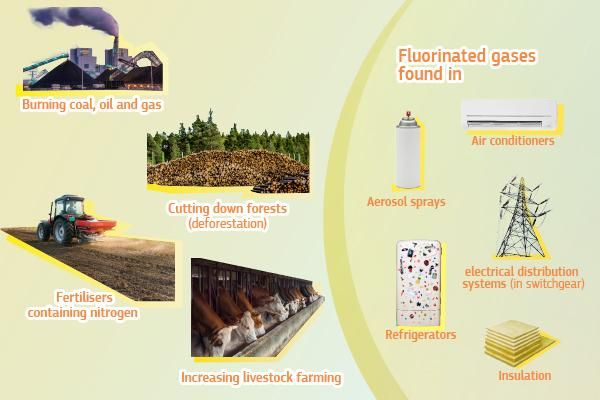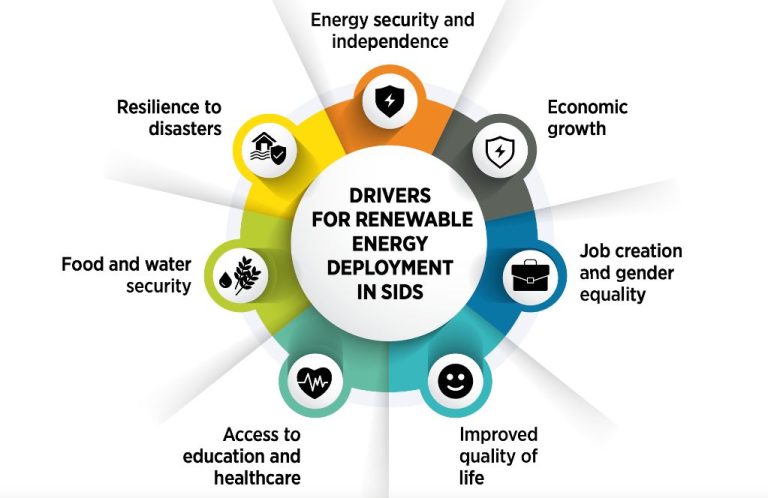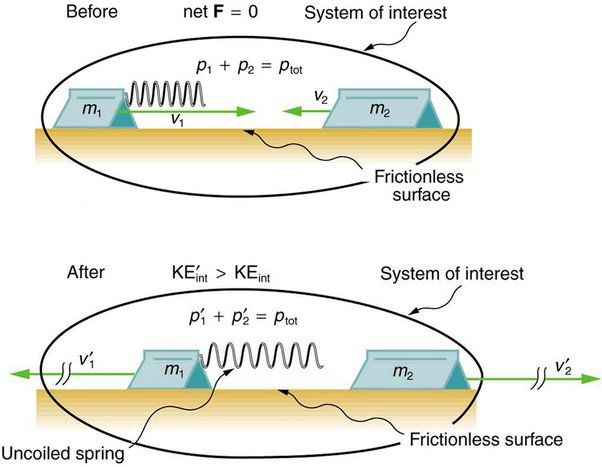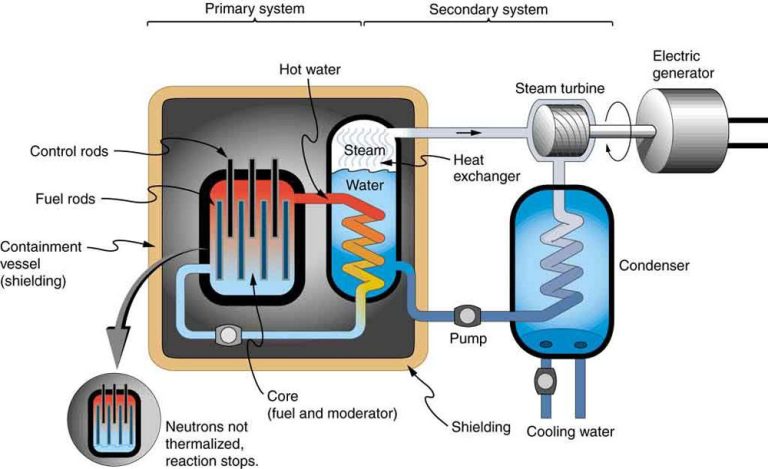How Is The Electrical Form Of Energy Produced?
Electricity is the set of physical phenomena associated with the presence and motion of matter that has a property of electric charge. Electricity is an essential part of modern society that is used to power homes, businesses, and industries. It allows us to turn on lights, operate appliances, run machinery, and access the internet.
There are a number of different methods used to generate electrical energy. The most common is through electro-mechanical generators, which use mechanical power to move a magnet past coils of wire to produce a flow of electrons or electrical current. The mechanical power used to turn these generators can come from a variety of sources.
The main ways that electricity is produced at utility-scale levels include:
- Fossil fuel power plants (coal, natural gas, oil)
- Nuclear power plants
- Hydropower plants
- Wind turbines
- Solar photovoltaic systems
- Geothermal power plants
- Biomass power plants
This overview will discuss how each of these technologies harness a particular energy source to generate usable electricity that powers our modern world.
Fossil Fuels
The most common way of producing electricity around the world is by burning fossil fuels like coal, natural gas, and oil. In power plants, these fuels are burned to heat water, producing steam that spins turbines. The turbines are connected to generators that convert the mechanical energy into electrical energy.
Coal is a combustible black or brownish-black sedimentary rock that is mined and crushed into a fine powder that is then burned. When coal is burned, it heats water in a boiler, creating steam. This high-pressure steam is used to spin turbines attached to an electrical generator that produces electricity.
Natural gas is a hydrocarbon gas mixture consisting primarily of methane that is formed from fossilized organic materials. It is extracted from underground reservoirs and transported through pipelines. At a power plant, the natural gas is burned in a combustion turbine or steam boiler that spins a generator to produce electricity.
Fuel oils like diesel, gasoline, and kerosene are refined from crude oil. They are burned to heat water and produce high-pressure steam that rotates turbines for electric generation. Petroleum provides around 1% of U.S. electricity generation.
Nuclear Energy
Nuclear energy utilizes the process of nuclear fission to generate electricity. In nuclear fission, atoms of radioactive fuels like uranium or plutonium are split into smaller atoms, releasing a large amount of energy in the process. The most common nuclear fission reactor design involves the radioactive fuel placed inside a reactor vessel where a controlled fission chain reaction takes place. The enormous amount of heat released from splitting the atoms is used to boil water into steam. The high-pressure steam then spins a turbine connected to an electrical generator to produce electricity.
Nuclear power plants utilize uranium, a non-renewable resource, as fuel. Uranium atoms are bombarded with neutrons which causes them to split apart into lighter atoms. This fission process releases neutrons, heat and gamma radiation. The neutrons go on to split other uranium atoms, resulting in a fission chain reaction. The heat is used to make steam to spin turbines and generate electricity. Nuclear power plants provide steady power generation unhindered by external environmental conditions, producing no carbon emissions during operation.
However, nuclear energy faces challenges due to concerns about radioactive waste storage, high costs, and associations with nuclear weapons proliferation. Proper management of radioactive waste and safety mechanisms are critical at nuclear plants. Overall, nuclear energy serves as a major source of reliable, low-carbon electricity generation in many countries.
Hydropower
Hydropower is one of the oldest methods of producing renewable electricity. It uses the energy from flowing water to spin large turbines that are connected to generators. When the water flows past the turbine blades, they rotate and spin a shaft inside the generator, creating an electric current.
The amount of electricity that can be generated depends on the volume and speed of the water flow. The faster and greater the flow, the more power that can be produced. That’s why hydropower facilities are often built on or near rapidly flowing rivers as well as at dams, where the flow can be increased and controlled.
Hydropower is considered a very reliable and flexible renewable energy source since operators can control the flow of water to produce energy on demand. Hydroelectric dams also offer other benefits like flood control, irrigation, and recreation. However, building large dams can negatively impact the natural environment and wildlife habitats.
Hydropower accounts for over 6% of total U.S. electricity generation and over 40% of generation from renewables. Some of the largest hydropower facilities in the U.S. are located on the Columbia River along the Oregon-Washington border, as well as the Colorado River. There is still significant potential to expand hydropower, especially through small-scale and low-impact hydro projects.
Wind Power
Wind power harnesses the wind to generate electricity. Wind turns the blades of wind turbines, which spin a shaft connected to a generator that produces electricity. Wind is a renewable energy source that does not produce any emissions. Wind power has become one of the most rapidly growing energy sources in the world.
Utility-scale wind turbines are usually grouped together on wind farms. These can contain hundreds of wind turbines and generate hundreds of megawatts of power. Wind turbines are typically spread out over large areas to maximize energy production. The wind turbines capture kinetic energy from the wind and convert it into mechanical power to drive electric generators.
Wind power is very dependent on the wind speed. Ideal wind speeds for wind turbines are around 25-55 mph. At lower wind speeds the turbines generate less power, while at very high wind speeds the turbines shut down to avoid damage. Good wind farm locations are areas with consistent strong winds, such as hills, mountains, plains, shorelines and offshore sites.
Wind power supports grid operations, diversifies the energy supply, and produces no emissions. However, it can pose challenges for integrating large amounts of variable renewable energy into the grid. Wind turbines also raise environmental concerns regarding wildlife impacts, land use, and noise pollution. Overall, wind power provides a sustainable way to generate emissions-free renewable electricity from an abundant natural resource.
Solar Power
One of the most promising renewable energy sources is solar power. Solar power harnesses energy from the sun and converts it into electricity. There are two main types of solar energy technologies:
Photovoltaic Cells
Photovoltaic cells, also known as solar cells, are made from materials like silicon that convert sunlight directly into electricity. When sunlight hits the solar cell, the energy knocks electrons loose from their atoms, allowing the electrons to flow through the material and produce electricity. This process of converting light to electricity is called the photovoltaic effect.
Photovoltaic systems can be small-scale installations on individual buildings or large solar farms with thousands of photovoltaic panels. While solar accounts for only about 3% of U.S. electricity generation today, photovoltaics are the fastest-growing renewable energy technology and have great potential to help meet future energy needs.
Solar Thermal Systems
Solar thermal systems, also known as concentrated solar power, use mirrors and lenses to focus sunlight onto a receiver containing a heat-transfer fluid. The concentrated sunlight heats the fluid to very high temperatures, which is then used to generate electricity through a steam turbine or heat engine.
Some solar thermal systems store the heated fluid in thermal storage tanks so electricity can be generated even when the sun isn’t shining. Large-scale solar thermal plants can provide consistent power to the grid and help offset fossil fuel use.
Geothermal Energy
Geothermal energy utilizes steam from heated underground reservoirs to generate electricity. The Earth’s core contains a vast amount of thermal energy created by the slow decay of radioactive particles. This geothermal energy heats underground water, sometimes all the way to boiling point, which produces steam. Wells can be drilled into these underground reservoirs to tap the steam. The steam then rises to the surface and powers turbine generators that convert the steam’s kinetic energy into electrical energy.
Geothermal power plants are typically built near tectonic plate boundaries where volcanic activity brings hot underground water closer to the surface. Countries like the United States, Philippines, and Iceland have substantial geothermal resources that provide a significant portion of their electricity. The geothermal process does not create any greenhouse gases, making it a clean and renewable energy source.
Biomass
Biomass energy is derived from organic matter such as plants, agricultural waste and garbage. The biomass is burned to produce heat which generates electricity or is converted into a gas to generate electricity. Biomass power plants burn feedstocks such as wood chips, agricultural waste, and garbage to produce steam that drives a turbine to generate electricity. Biogas plants process organic waste in an oxygen-free chamber to produce methane gas that can fuel power generators.
Burning plant matter is one way to utilize biomass for electricity production. Forest trimmings and other wood waste can be burned to heat water, which creates steam to turn turbines. The organic compounds in plant matter contain stored energy from the sun. When burned, this energy is released as heat that can generate electricity.
Landfill gas or biogas produced from decomposing organic waste like household, industrial and agricultural waste is another biomass resource. As trash and waste in landfills decompose, methane gas is produced as a byproduct. This gas can be captured and used to fuel electric generators. The methane emissions, which are greenhouse gases more potent than carbon dioxide, are also prevented from escaping into the atmosphere and contributing to climate change.
Transmission
Once electricity has been generated at power plants, it needs to be transported long distances to homes, businesses and other facilities. This is done through transmission lines that carry high-voltage electricity across the country.
Transmission lines consist of aluminum or steel wires strung between tall metal towers. These lines transport electricity at high voltages, typically 155,000 to 765,000 volts. Using high voltages enables more power to be transmitted efficiently over long distances with smaller wire sizes and lower energy losses.
Step-up transformers located at power plants increase the relatively low voltage electricity produced at generators to the extremely high voltage levels used for transmission. This allows the electricity to travel hundreds of miles to substations located near demand centers.
Step-down transformers at substations then reduce the transmission voltage to safer levels around 2,000 to 35,000 volts for distribution to homes, businesses, factories and other users. High voltage transmission combined with voltage stepping allow electricity to be provided throughout large regions efficiently and economically.
Storage
Batteries and other storage methods allow saving electricity for when it’s needed. Large scale batteries can store electricity generated from renewable sources like solar and wind power for later use when production from these intermittent sources is low. Popular battery technologies used today include lithium-ion batteries and flow batteries. Pumped hydro storage accounts for over 90% of utility-scale energy storage worldwide – this involves pumping water uphill into reservoirs then releasing it through turbines to generate electricity when needed. Other emerging storage methods include compressed air energy storage, flywheels, and supercapacitors. With further advances in storage technology, renewable energy can become an even more significant part of the grid.





